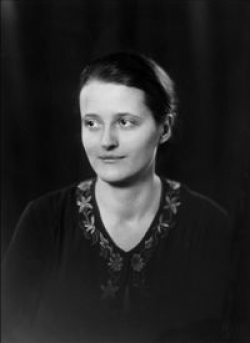Marthe Vogt

- Born
- 8 September 1903
- Died
- 9 September 2003 (age 100)
Marthe Vogt was an important neurobiologist who worked on the idea that messages were transferred from one brain cell to another via chemicals. Her work increased understanding of the role of neurotransmitters in the brain and supported the development of modern medical treatments for mental illnesses such as depression.
Vogt was born the 8th September 1903 in Berlin, Germany, and her parents were the leading neurobiologists of the time. At school, Vogt only really enjoyed physics and maths, claiming that the other subjects were taught in a ‘dull, slow and old-fashioned way.’ She also particularly enjoyed astronomy.
With her home environment being so dominated with talks of physiology and neurology, Vogt went on to study Medicine and Chemistry at Berlin University from 1922 to 1927. She also attended lectures about experimental psychology but eventually decided that she’d like to apply chemistry to a fundamental medical problem. After graduating in 1927 she spent the first half of her practical year working in a hospital and the second half in her father’s laboratory, helping to investigate the anatomy of nerves and the nervous system for her Doctor of Medicine thesis.
By the 1930s she was considered a leading pharmacologist, and in 1931, at just 28, she was appointed the head of the chemical division at the Kaiser Wilhelm Institute for Brain Research, now called Max Planck Institute for Brain Research.
Although Vogt did not actively express an interest in politics, after reading Mein Kampf by Adolf Hitler she did not believe that the author of such dangerous work could ever lead Germany. After Hitler became Chancellor she left Germany in 1935, and worked at the National Institute for Medical Research in London with Nobel laureate Sir Henry Dale. Her team published the first paper which described the chemical basis of movement - the release of acetylcholine, a chemical that is released by nerves and carries signals from the spinal cord to muscles. This type of chemical is called a neurotransmitter.
In 1954, at the University of Edinburgh, she wrote her most famous paper on sympathin – a mixture of two similar hormones adrenaline and noradrenaline. She discovered that sympathin was not evenly distributed in the brain and proposed that it too could possibly act like a neurotransmitter and aid the communication between brain cells.
Yet another neurotransmitter Vogt worked on was serotonin, the happiness chemical that affects mood, appetite and sleep. She demonstrated that serotonin in the brain is reabsorbed by the cells that release it. Blocking this reabsorption results in more serotonin in circulation around the brain and a 'happiness boost'. The importance of Vogt's work is reflected in the establishment of modern medical treatments for depression and other mental illnesses.
Vogt was an energetic individual and was very precise in everything that she did. Upon her retirement she received many honours, including becoming an honorary member of the American Academy of Arts and Sciences, the British Pharmacological Society and becoming an honorary fellow of the Royal Society of Medicine.



